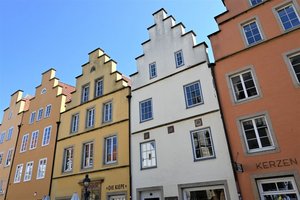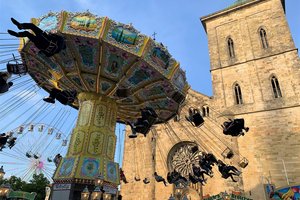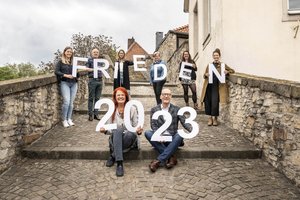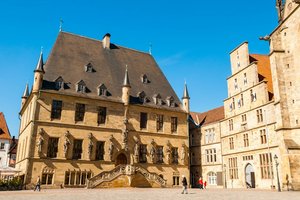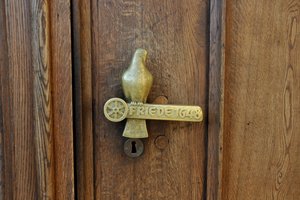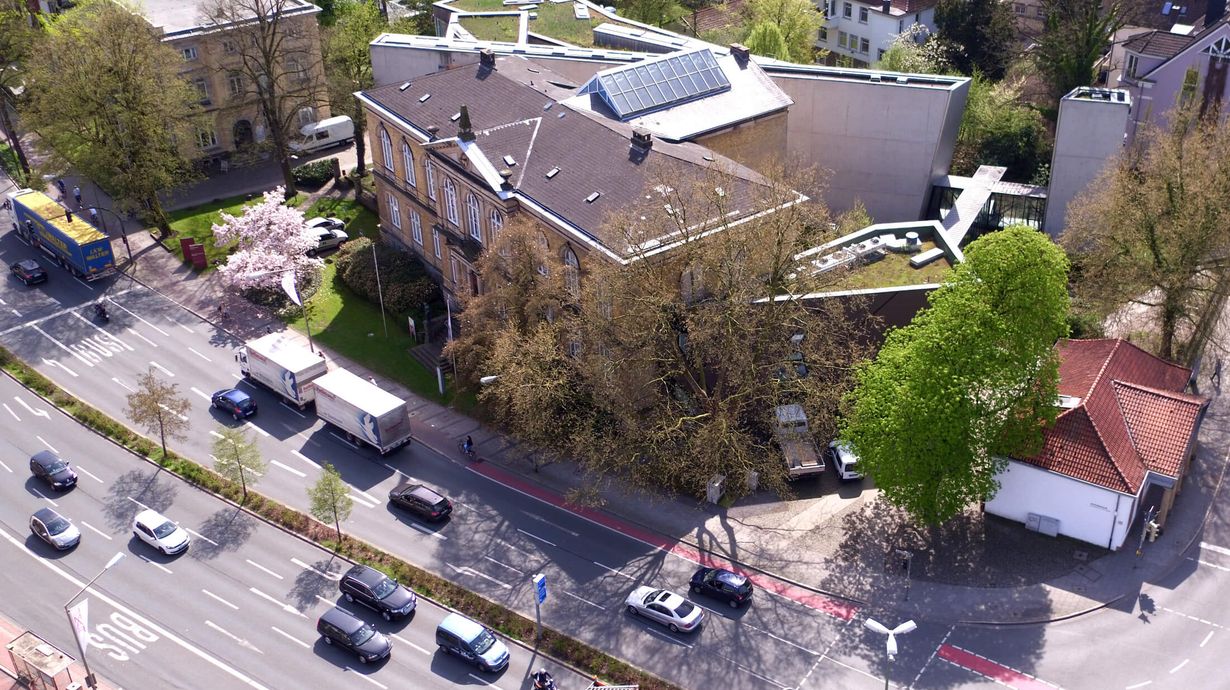The four houses of the Museum Quarter
The Museumsquartier Osnabrück combines four buildings from different eras: The Felix Nussbaum House (1998) including extension (2011), the Museum of Cultural History (1888/1899), the Akzisehaus (1807) and "Die Villa_" - formerly Villa Schlikker (1900/1901).
While the Felix Nussbaum House houses the largest international collection of works by the painter Felix Nussbaum, the Museum of Cultural History is dedicated to the history of Osnabrück and an extensive collection of graphic works by Albrecht Dürer, including woodcuts and engravings. "Die Villa_" sees itself as a space for debate, a place where ideas on how democracy can be strengthened are generated. The starting point is a newly conceived, critical permanent exhibition on the life and work of Osnabrück lawyer Hans Georg Calmeyer. He saved Jews during National Socialism, but at the same time was complicit in Nazi terror. This ambivalence gives the "Villa_" its thematic orientation. The former customs house "Akzisehaus" serves as a venue for changing small exhibitions, readings, concerts, lectures and presentations.
The round arch bridge
Integrated into the quarter and the Felix Nussbaum House in particular, is the 17th century stone round bridge (also called "Ravelinbrücke"). This was rediscovered during preparations for the construction of the Felix Nussbaum House in 1996. It spanned the moat and was part of the former Heger Tor bastion. The bridge probably also included a drawbridge and a gate building. Experts are of the opinion that this structure was one of the most advanced of its time.
Felix Nussbaum
Born on December 11, 1904 in Osnabrück as the son of the middle-class Jewish merchant couple Philipp and Rahel Nussbaum, the artist grew up in an environment of security as well as musical and artistic influence. As early as 1924, Felix Nussbaum began studying art in Berlin, where he met his future wife, the Polish painter Felka Platek. An impressive career began for Nussbaum. As early as 1932, he traveled to Rome to study at the Villa Massimo as a guest of the German Academy. The emerging discrimination after the National Socialists seized power also made itself felt in Italy. Nussbaum left Rome and arrived in Belgium together with Felka Platek in February 1935. With the outbreak of the Second World War and the invasion of German troops, Nussbaum was initially imprisoned in the Saint Cyprien camp in the south of France, but fled back to Belgium in the summer of 1940. There he hid with his wife in various places until 1944. On June 20, 1944, they were both arrested and deported to Auschwitz via the Mechelen collection camp and murdered; the date of their death is unknown. His paintings, hidden in Brussels, were rediscovered 15 years later by one of Nussbaum's cousins. Nussbaum dealt with the Holocaust in his works more than almost any other artist of his generation. They deal with the themes of flight, expulsion, war and questions of cultural and religious identity. The works of his wife Felka Platek are also on permanent display at the Felix Nussbaum Haus. This collection is expanded by donations of unknown works.
The Felix Nussbaum House
With walls that abut each other at an oblique angle, slanted window slits, room dividers that protrude criss-cross into the room, acute-angled niches and floor cut-outs between the floors covered by gratings, Nussbaum's biography can be visually experienced in the architecture of the Felix Nussbaum House. The use of materials and the orientation of the building sections reflect the various stages of the artist's life. The main wing is clad in German oak and faces Alte-Synagogen-Straße, symbolizing his origins and childhood. The walnut corridor, a windowless, elongated structure made of exposed concrete, stands for the path to exile. It is oriented towards Villa Schlikker, where the NSDAP party headquarters were located between 1933 and 1945. The walnut bridge is clad with zinc sheets. The building materials used symbolize Nussbaum's fateful path in their increasing coldness.
Daniel Libeskind
The striking building of the Felix Nussbaum House was designed by the American architect and urban planner Daniel Libeskind as his first realized museum building. Opened by the city of Osnabrück in July 1998, the museum invites visitors to view permanent and temporary exhibitions of around 160 works by Felix Nussbaum. Daniel Libeskind was born in Lodz, Poland, in 1946 and turned to architecture after gaining initial experience as a professional musician. He studied at renowned universities in the USA and Great Britain. He is responsible for the architecture of numerous buildings, such as the Jewish Museum in Berlin, the Holocaust Name Monument in Amsterdam and the Imperial War Museum North in Manchester.
At a glance
| Opening times |
Tuesday to Friday: 11 a.m. - 6 p.m.
Saturday, Sunday and public holiday: 10 am - 6 pm |
| Price information |
Adults: 8,- €
reduced: 6,- €
up to 18 years: free |

